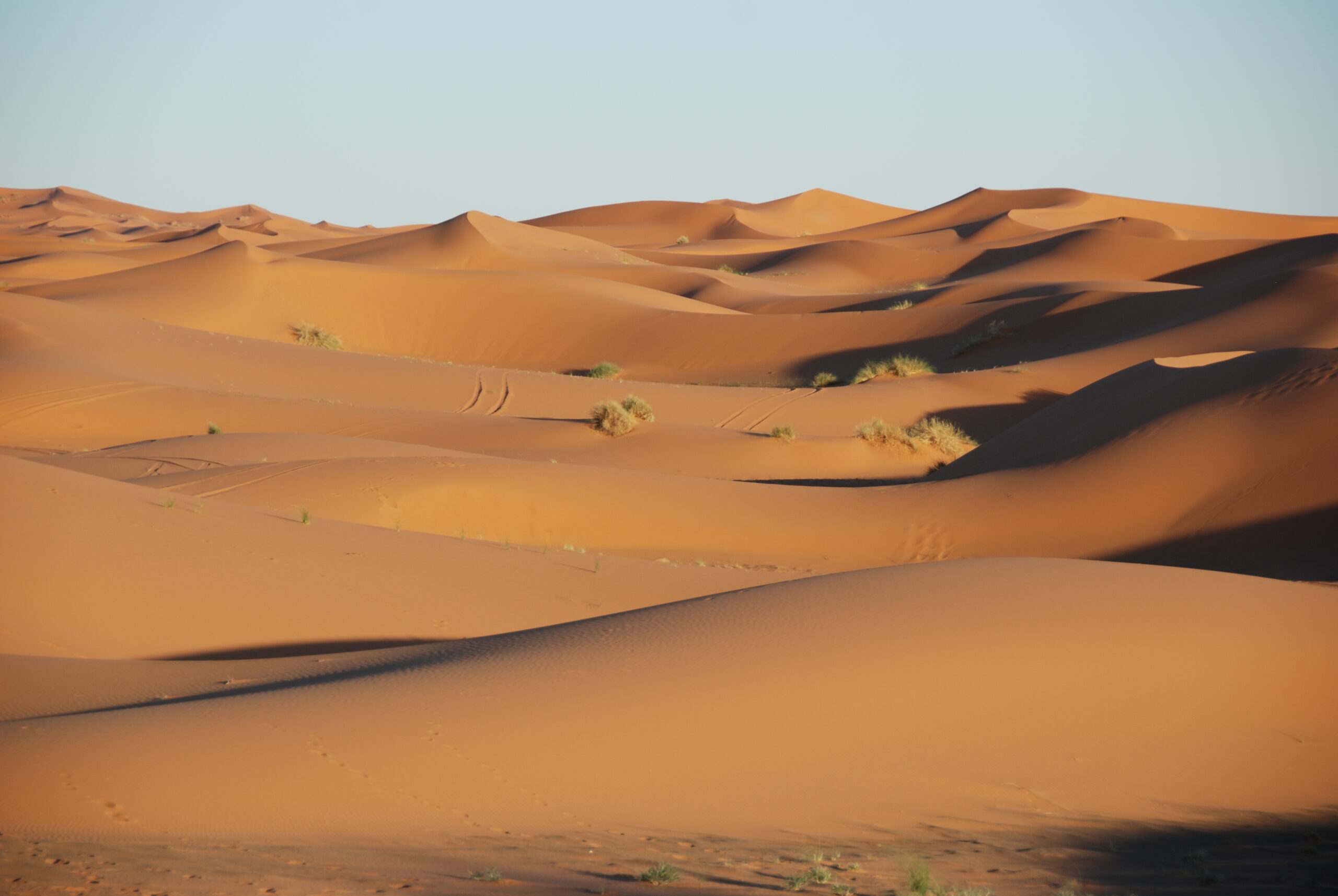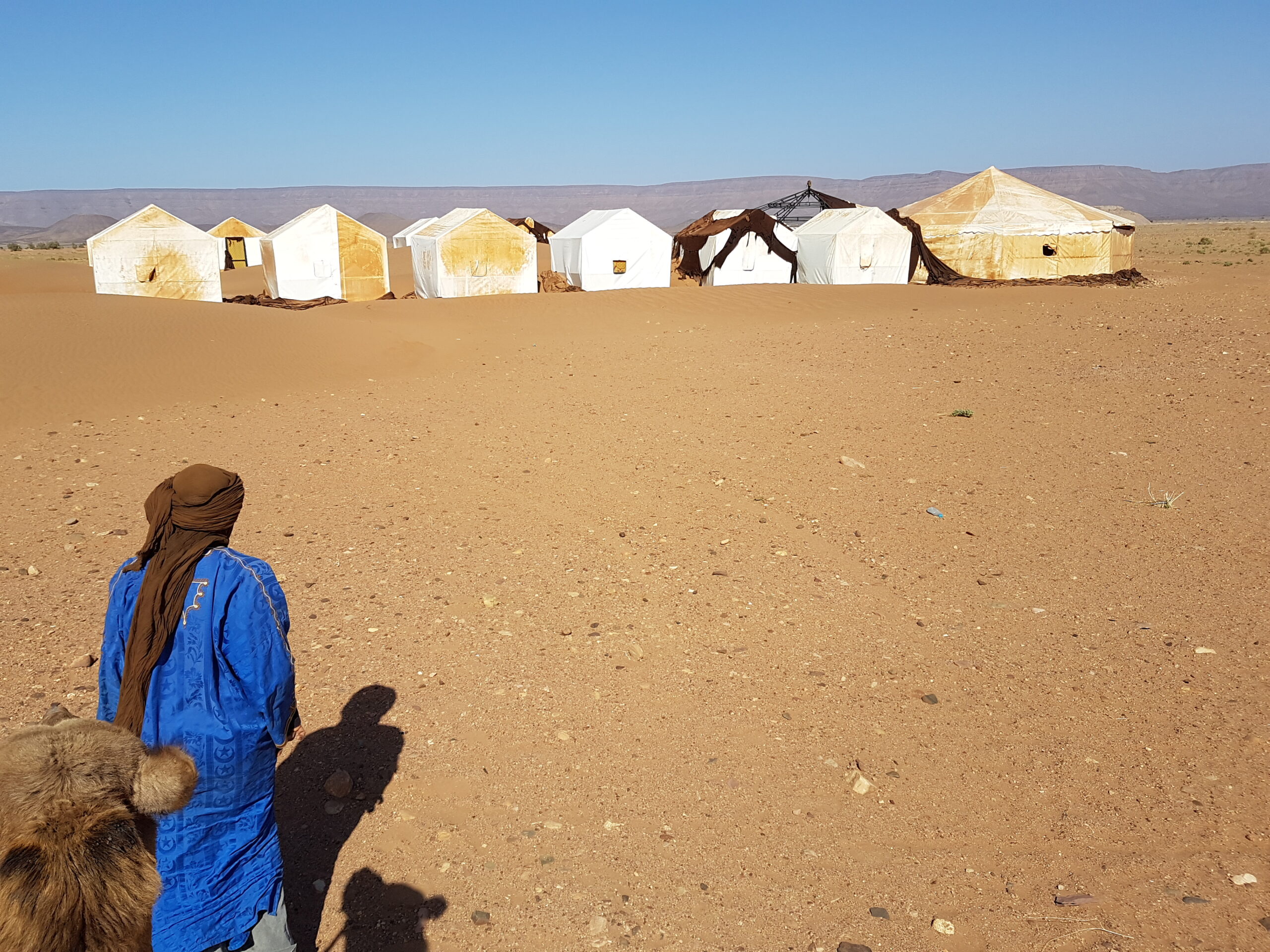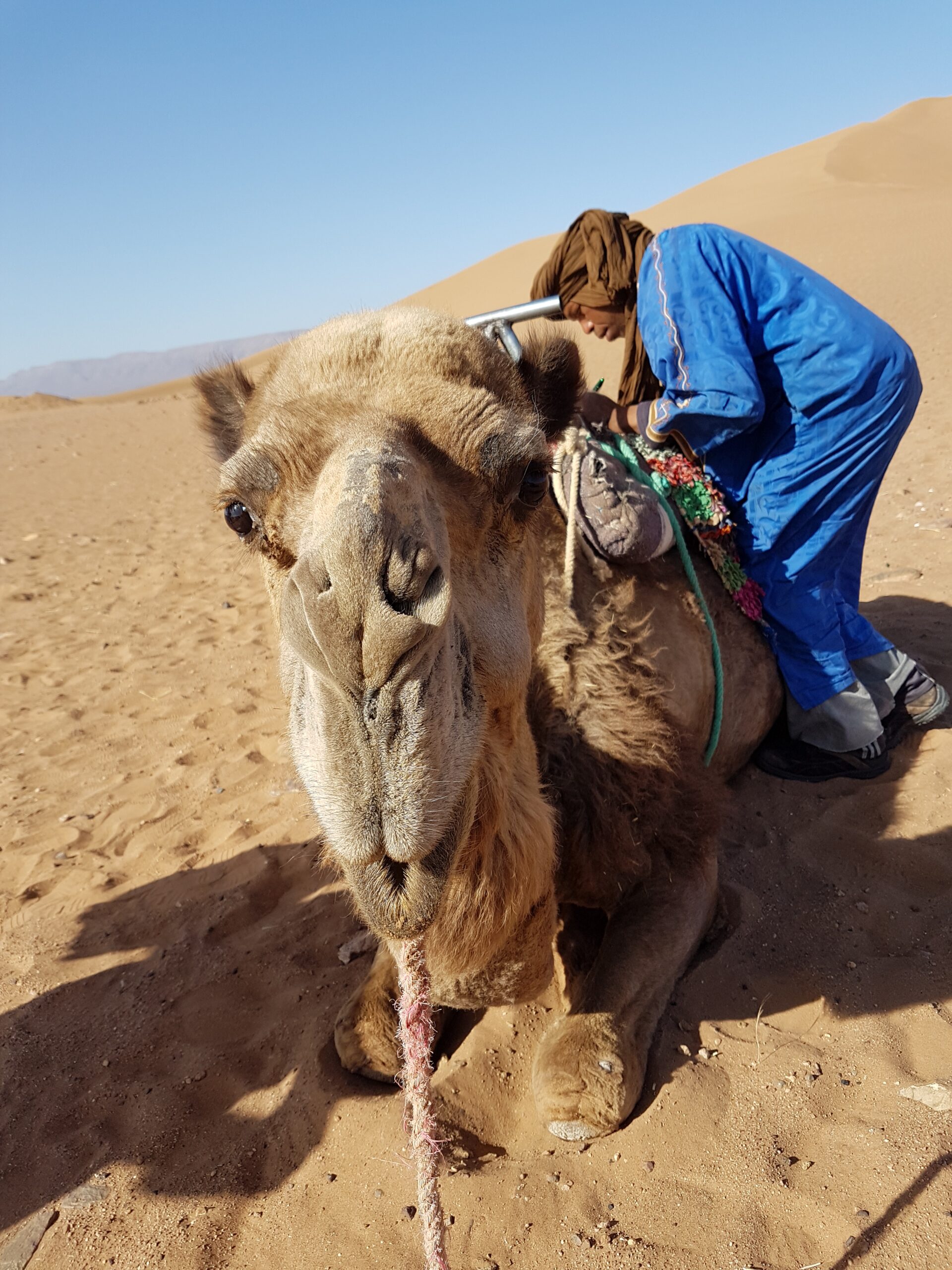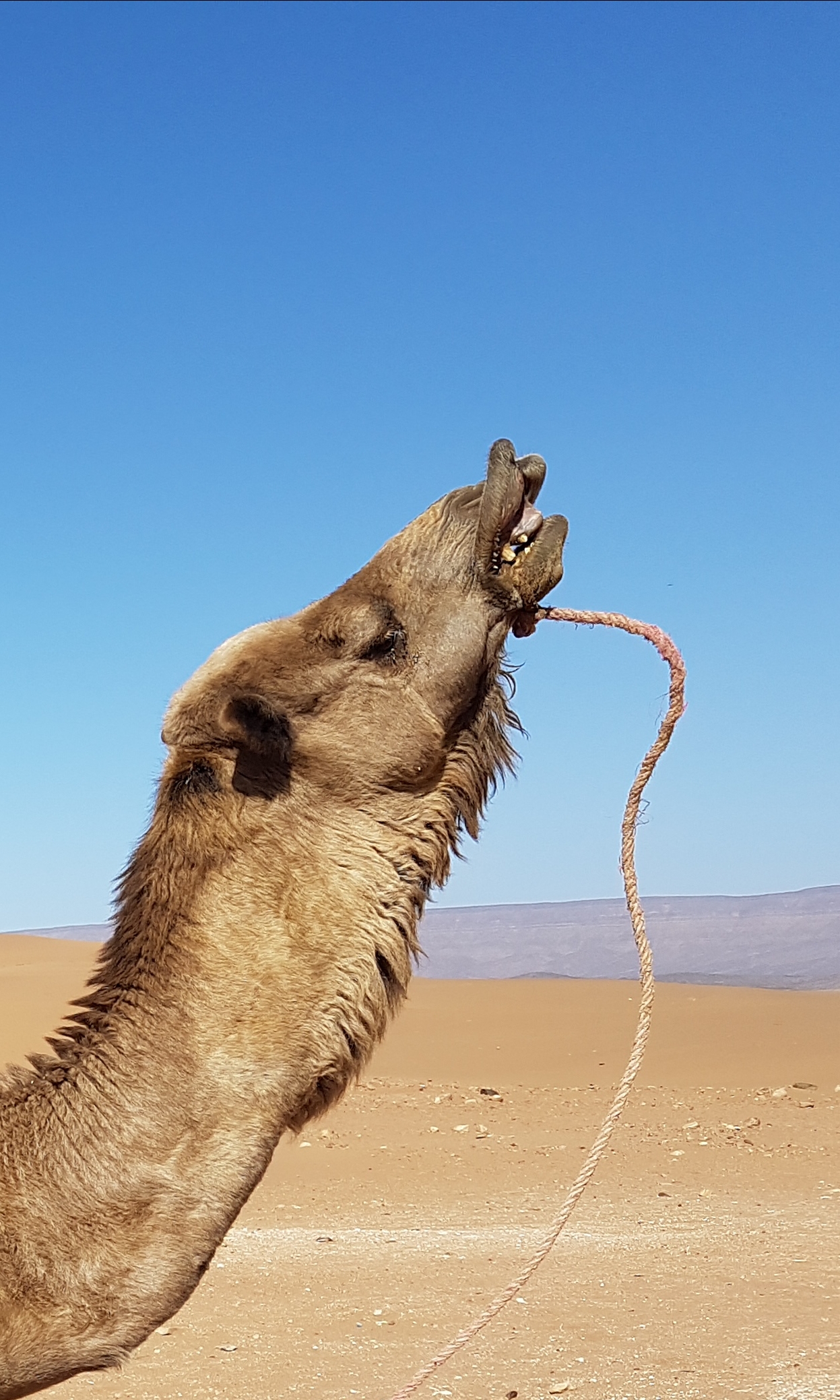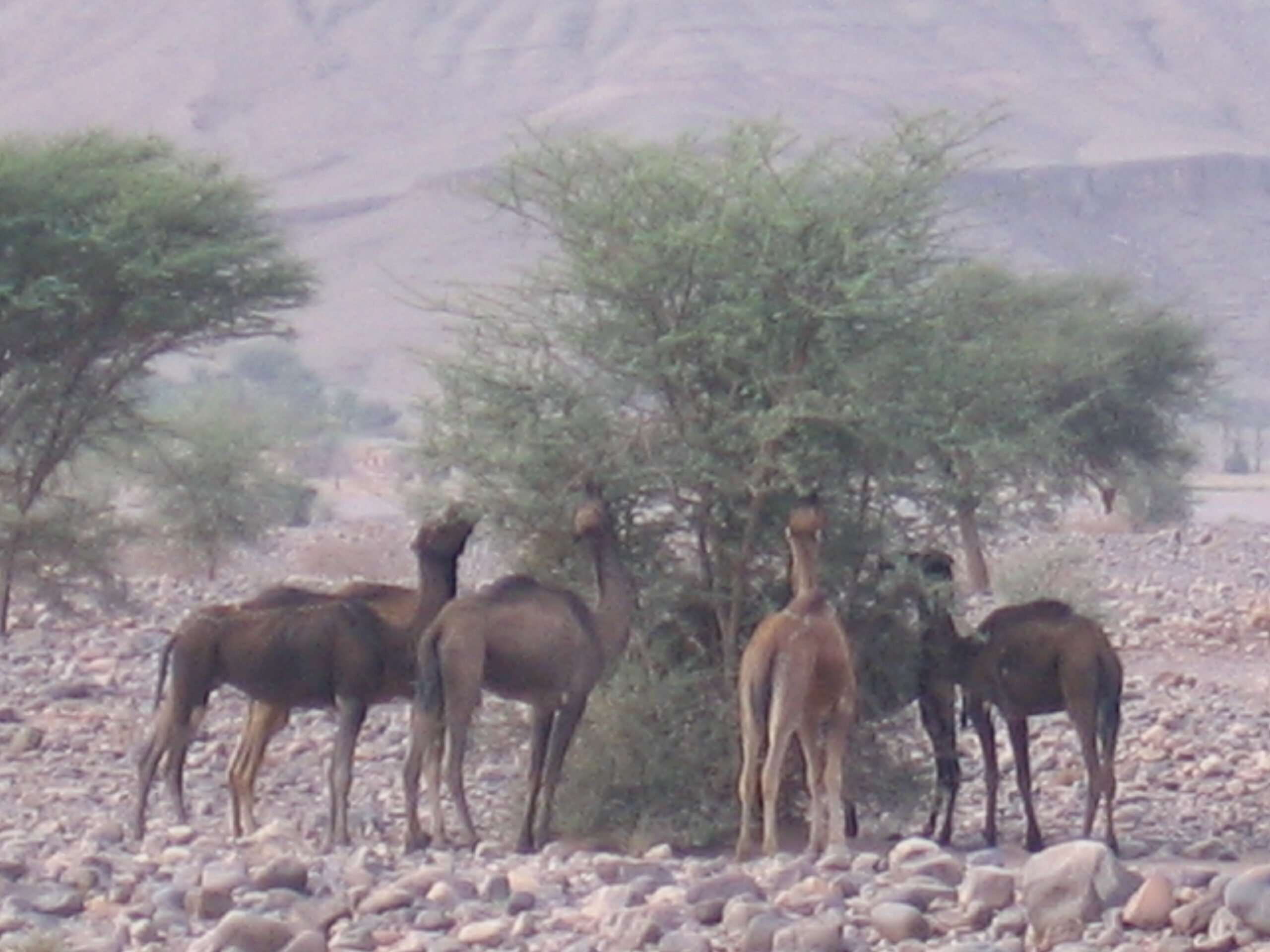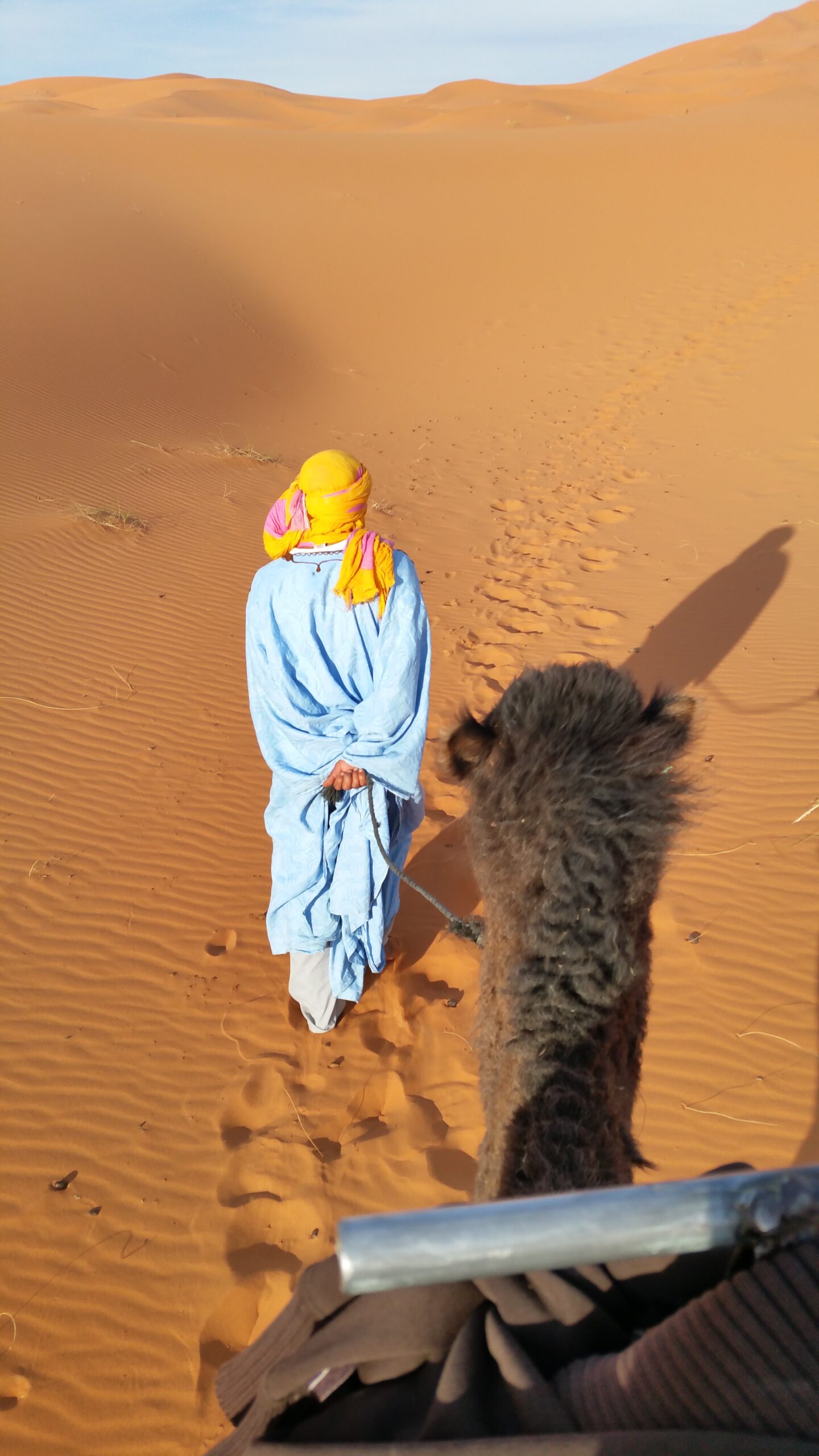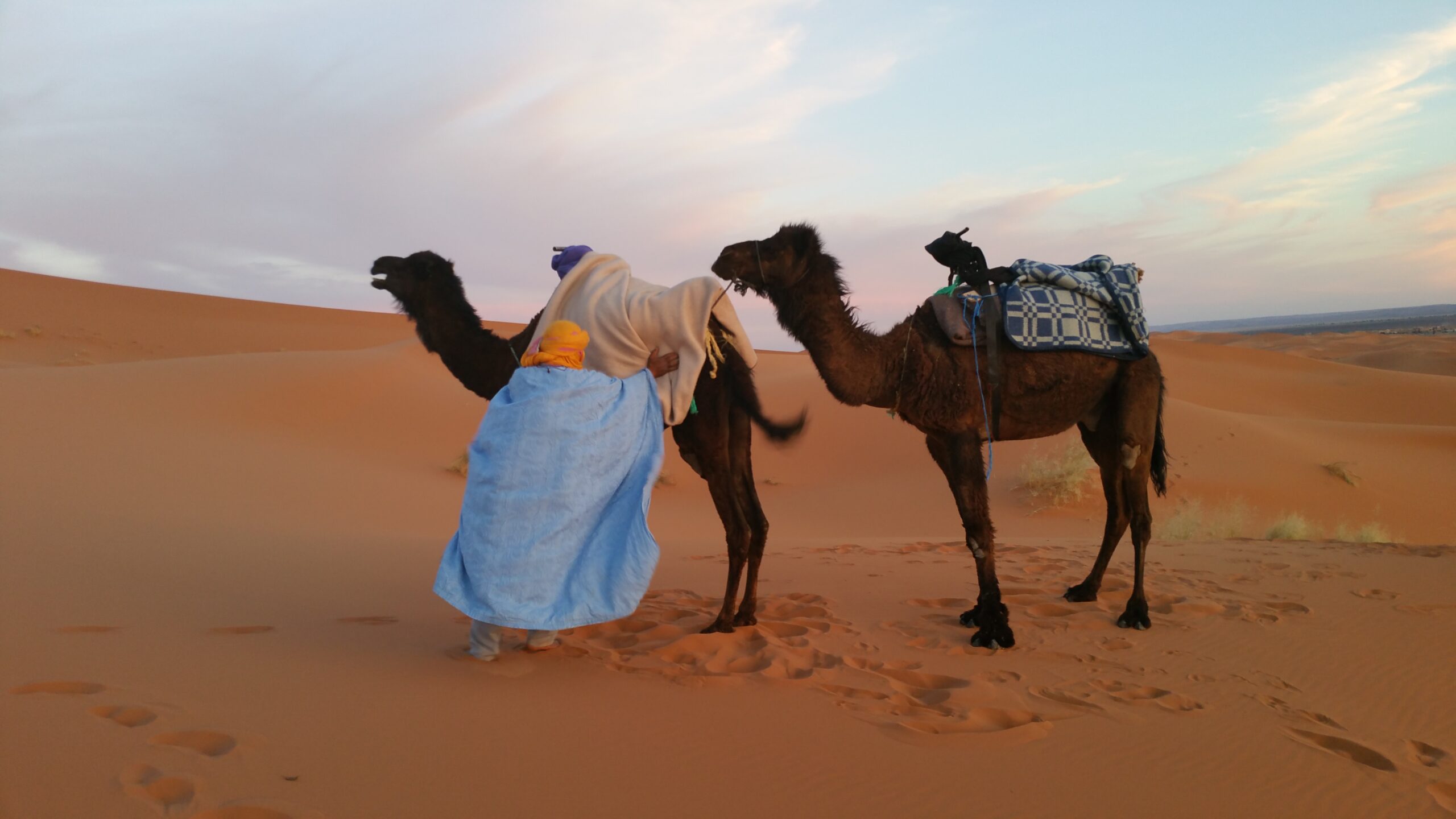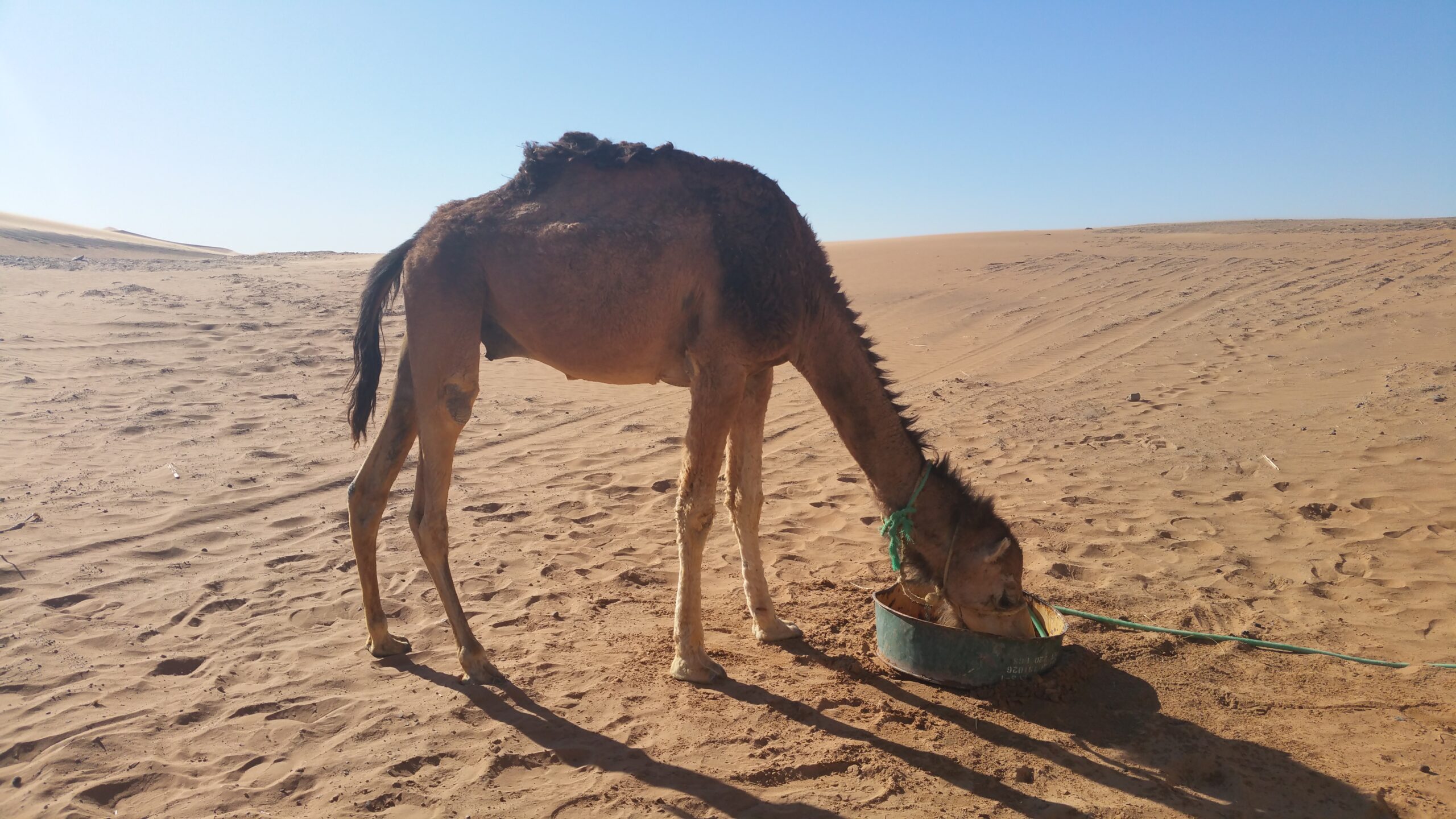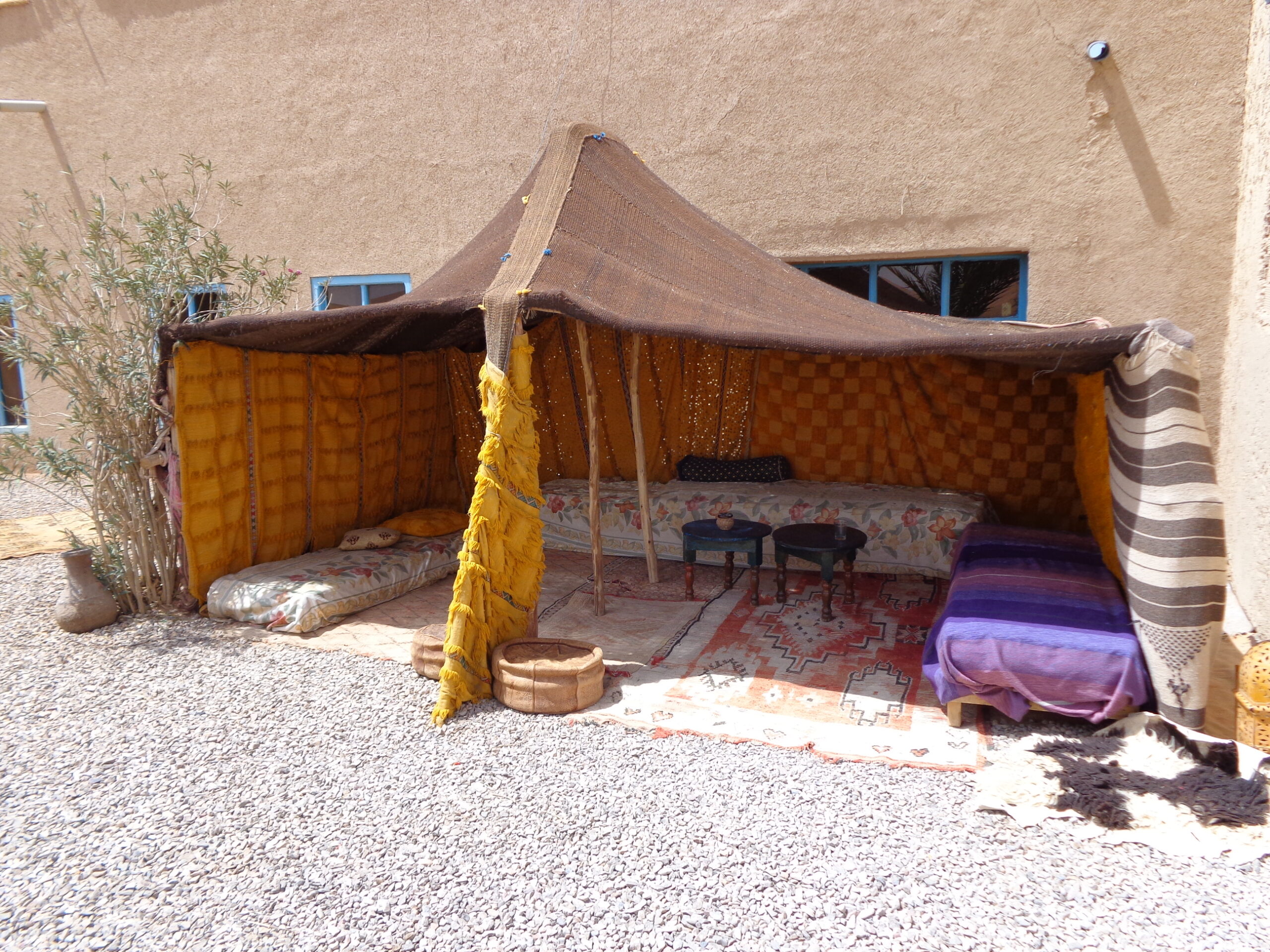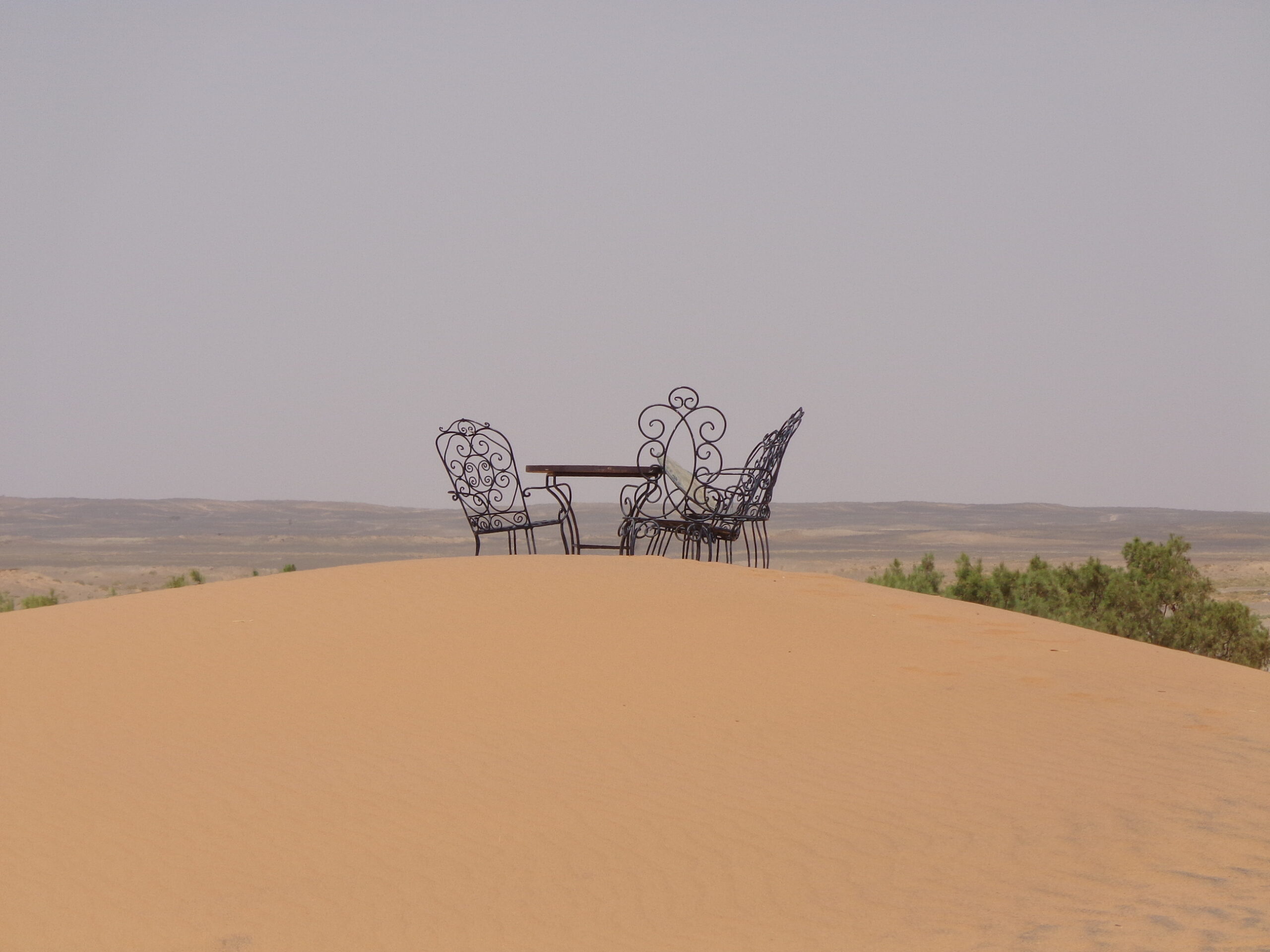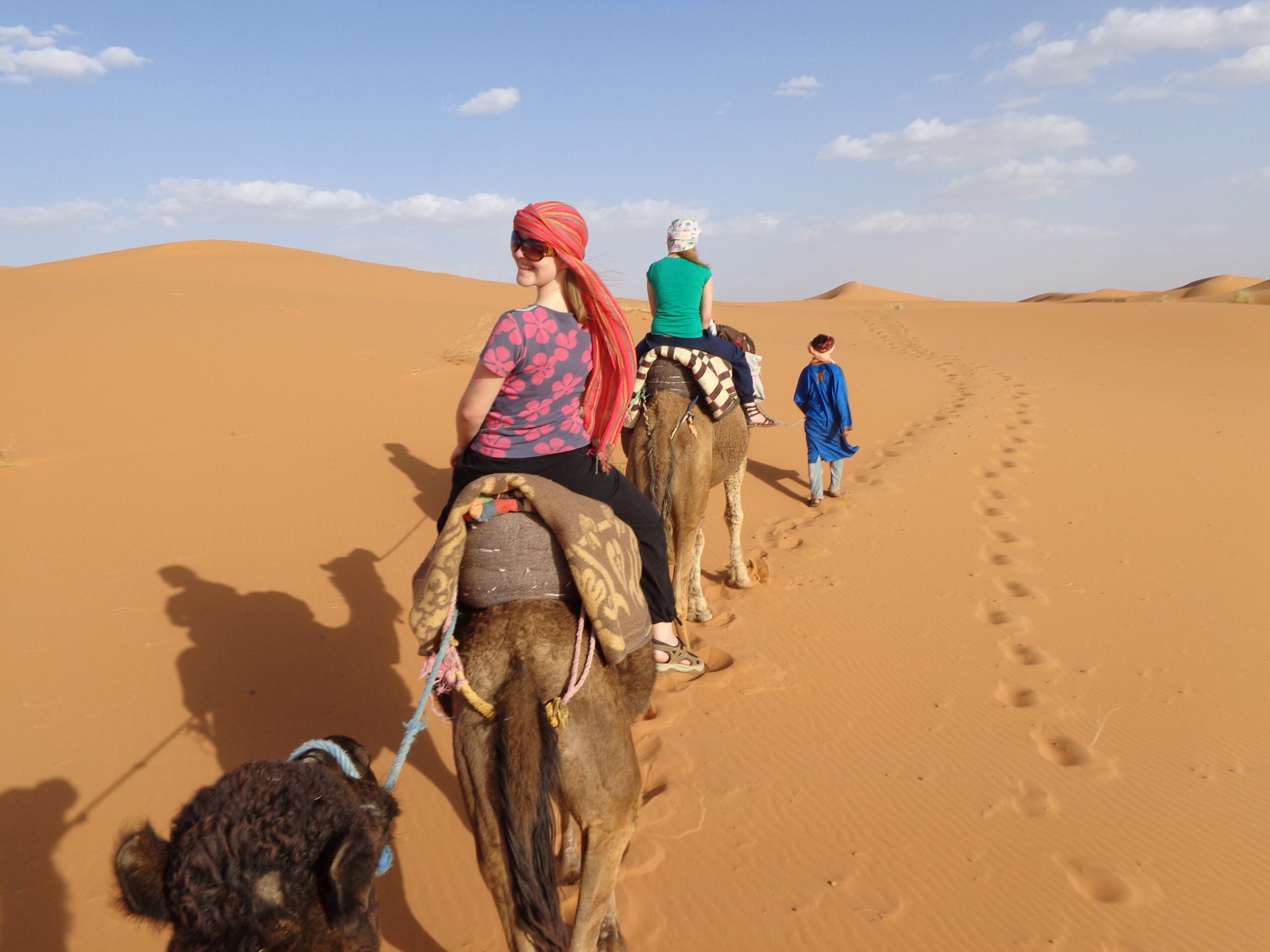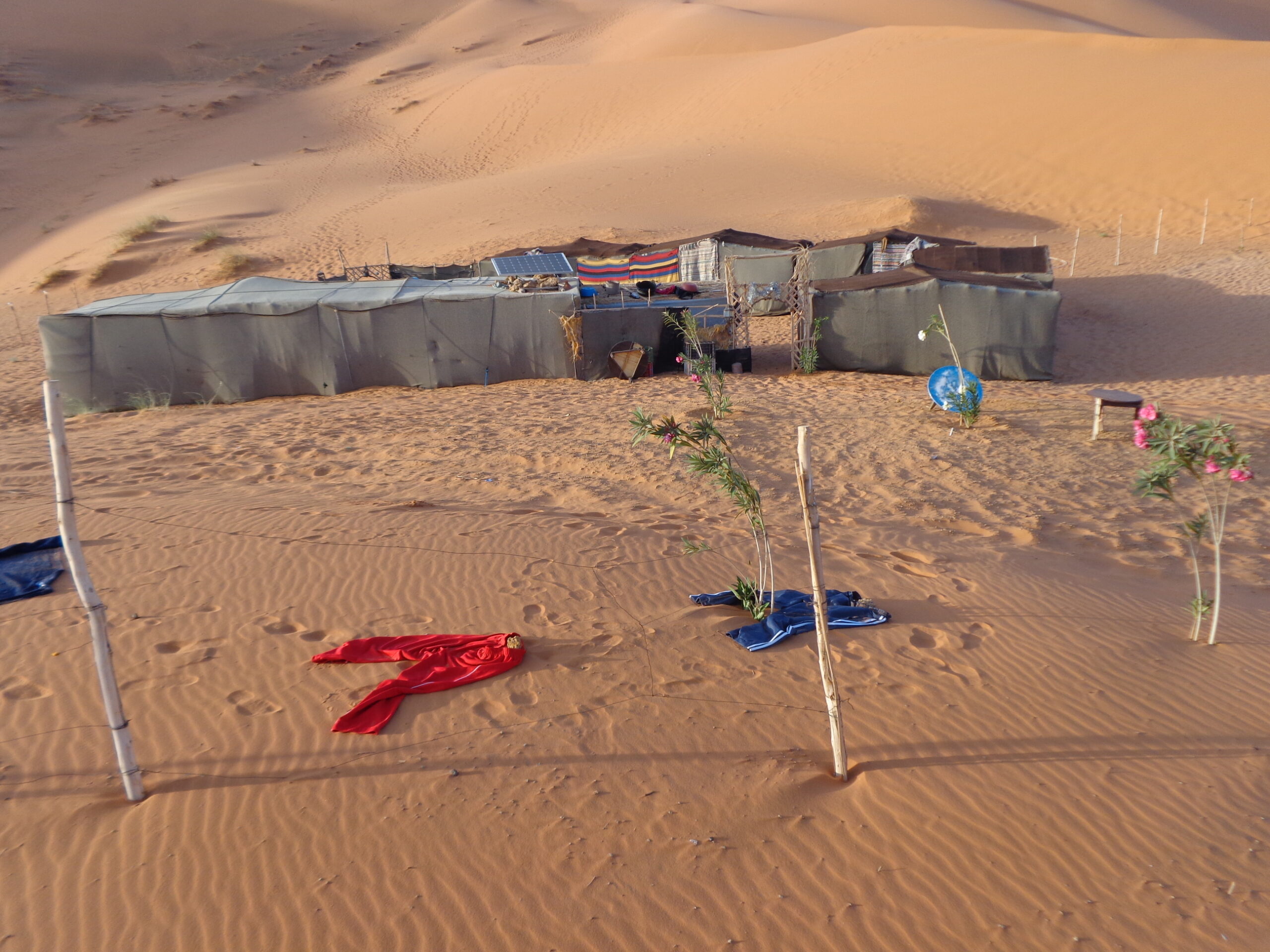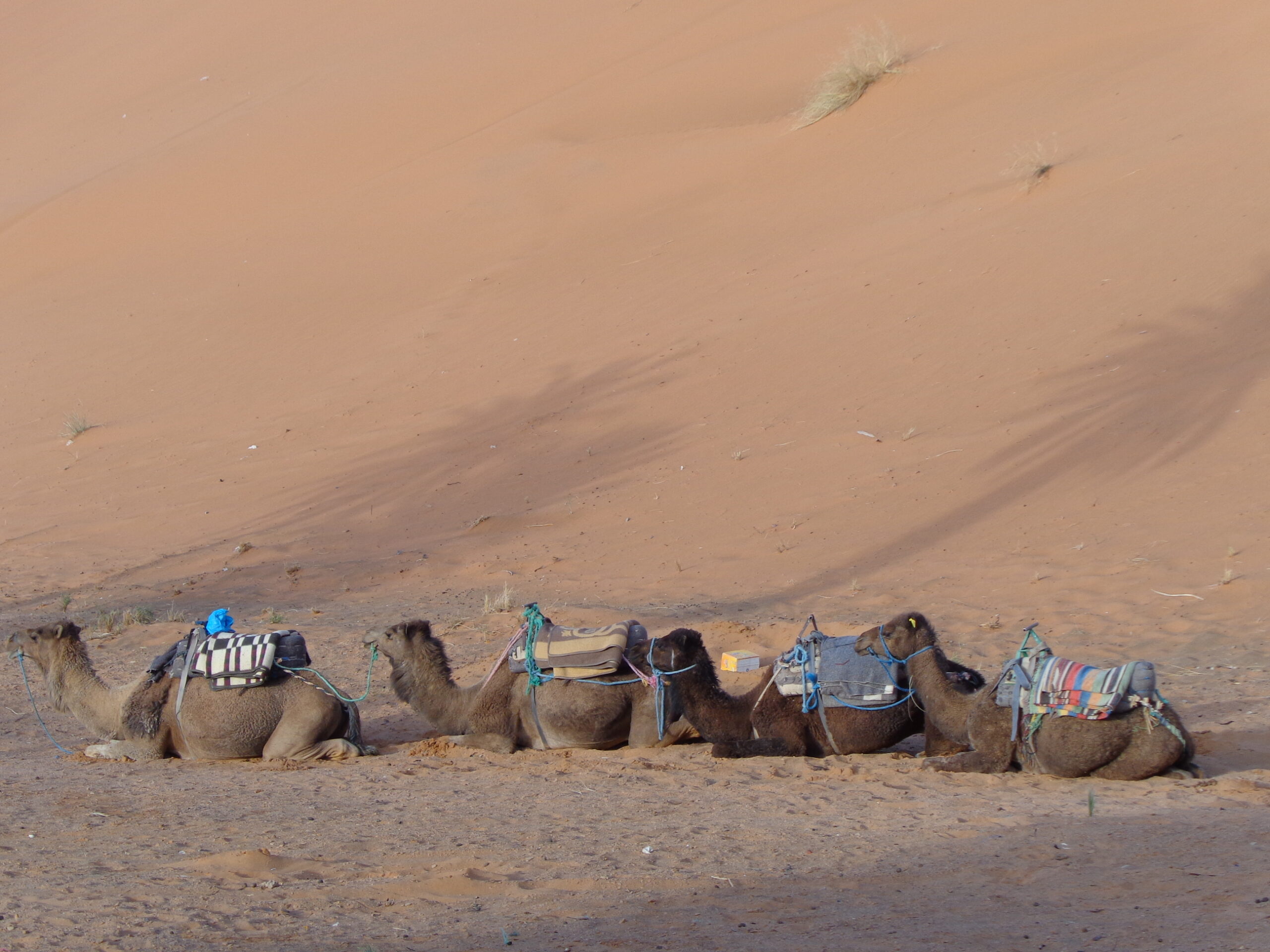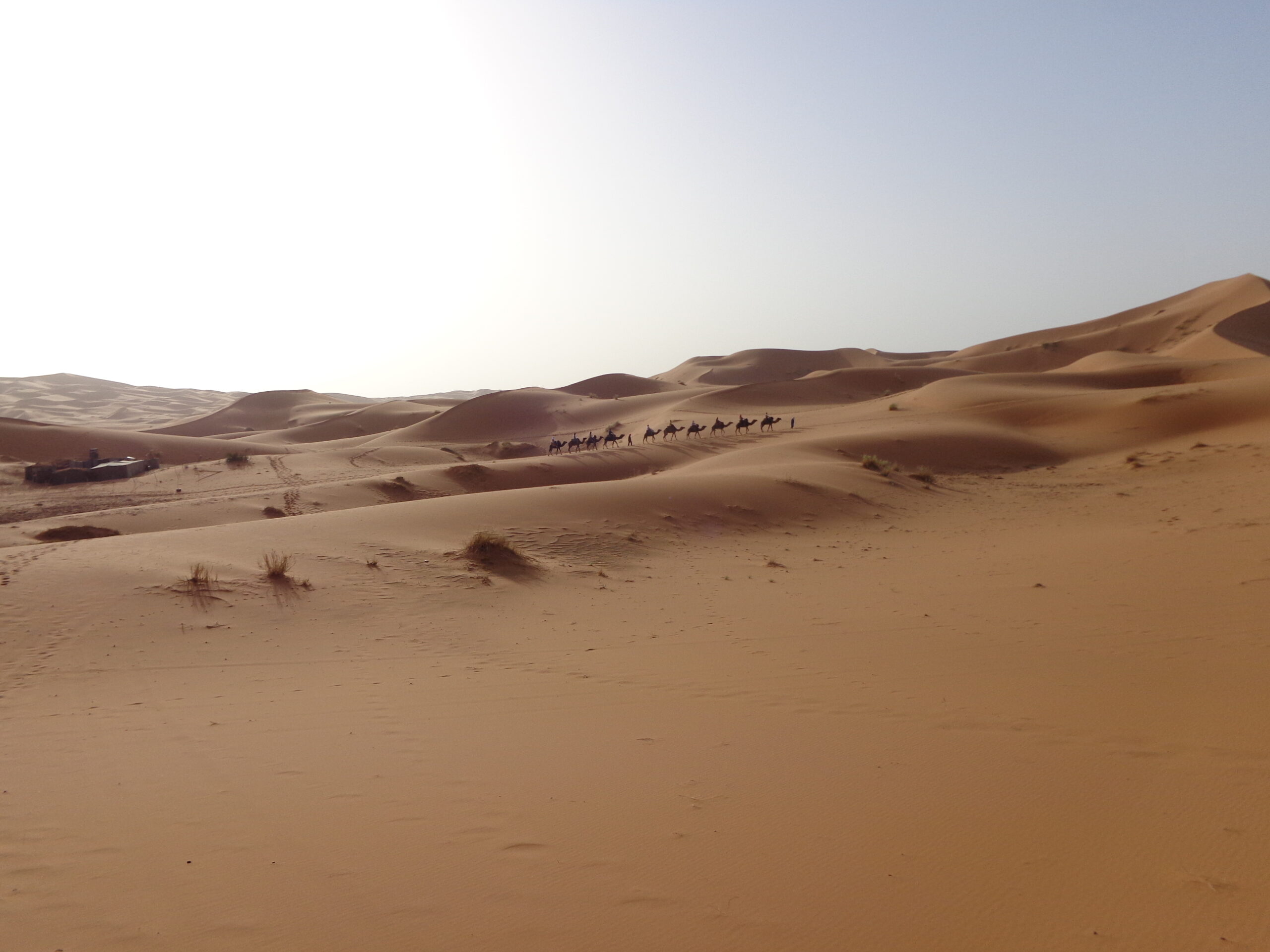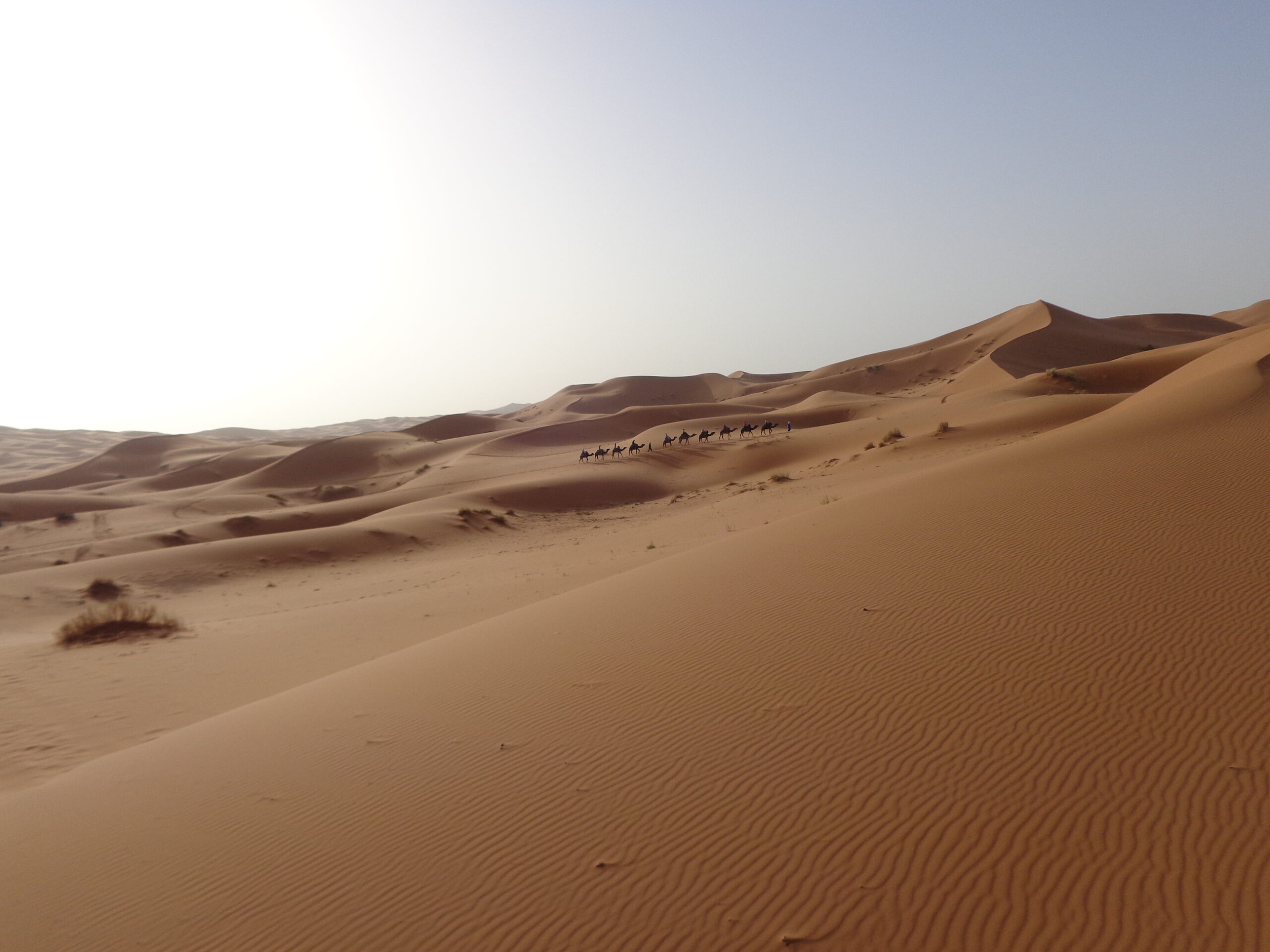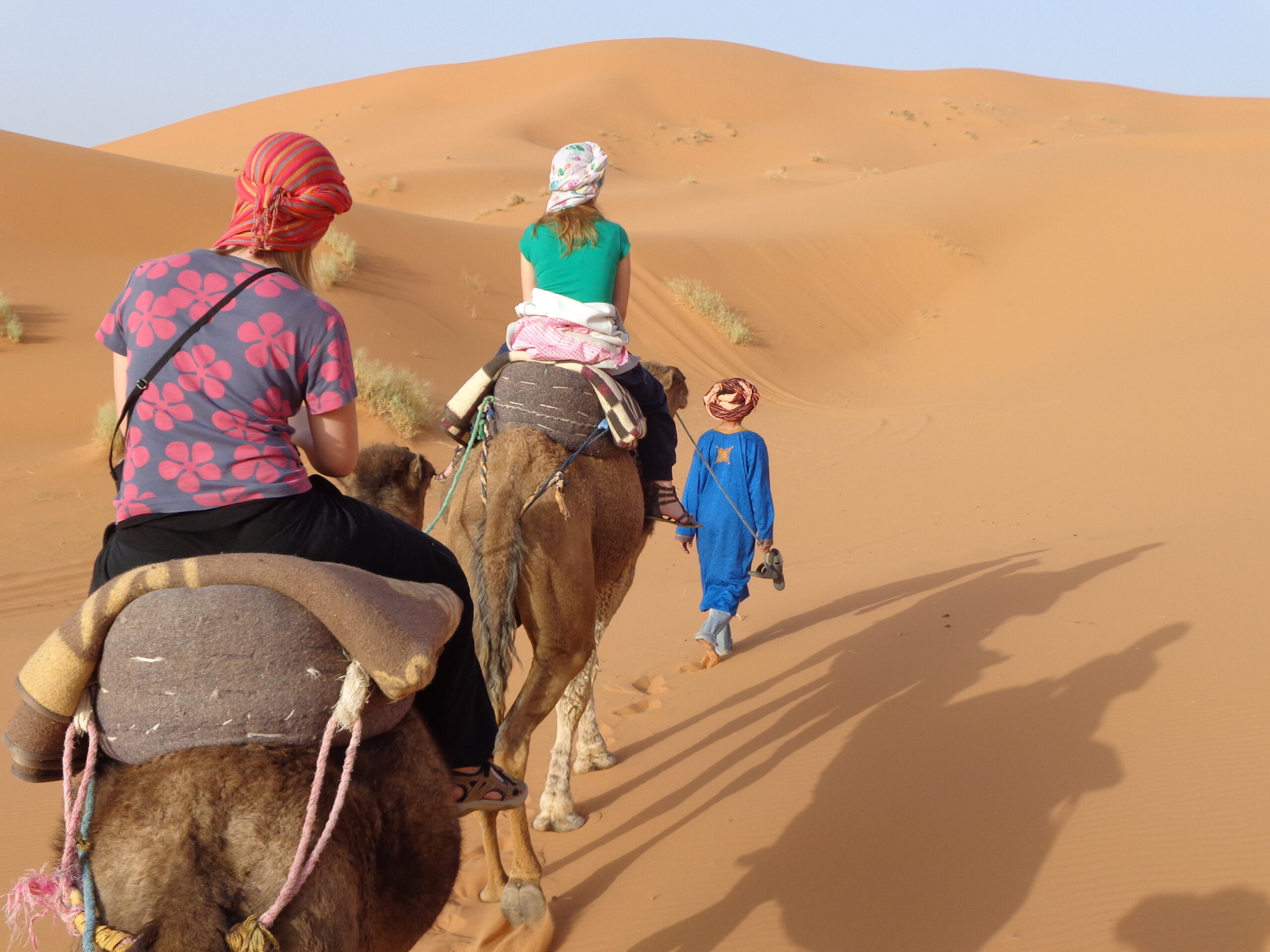thousand kasbahs & uncounted date palms
Oasis & Desert Sand
In the form of a long river oasis the Drâa river breaks through the rugged Anti-Atlas and flows into an endless sea of stone and sand 150 km further south east. In between lies the Drâa Valley, regarded as one of the most picturesque valleys in Morocco and popularly known as “the valley of the thousand casbahs and countless date palms’. In order to reach the area you must first cross the Anti-Atlas. Shortly after the Tizi-n-Tinififft pass (1660m)you reach Agdz.
Outside Agdz the road is lined with donkeys bearing heavy loads. It is market day and the walled market place is an impressive spectacle. Essential goods are sold at numerous stands. Agdz is not geared to cater for tourists. Nonetheless, or perhaps for this very reason, there are interesting finds to be had. The small town, which evolved from a French garrison, lies at the foot of the imposing 1531-metre Djebel Kissane. Agdz is the point of departure for beautiful excursions into the Anti-Atlas and further into the Drâa Valley.
Another village is called Douar Laabid – Arabic for slave village – and is mainly inhabited by Haratins. The Haratins originate from present-day Sudan and were kidnapped and enslaved in past centuries. Naturally slavery no longer exists in Morocco today. The Haratin have succeeded in retaining their own language, culture and music. There are also Jewish settlements in the valley.
One of the final settlements in the direction of the desert is Tamegroute. The village is famous way beyond the region as a place of pilgrimage with numerous marabouts (shrines) and a library with manuscripts from throughout the Arabic world, some of which are extremely old. Religious students use the old books for their studies. The Hamada du Drâa semi-desert marks the end of the river oasis.



